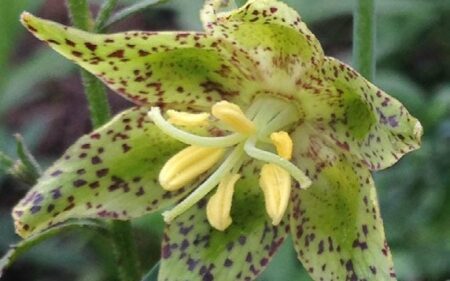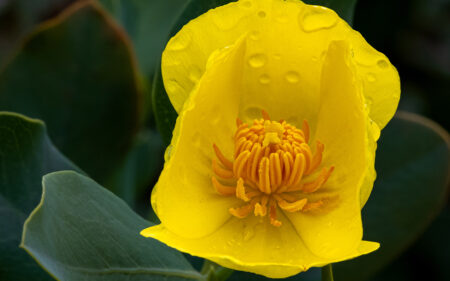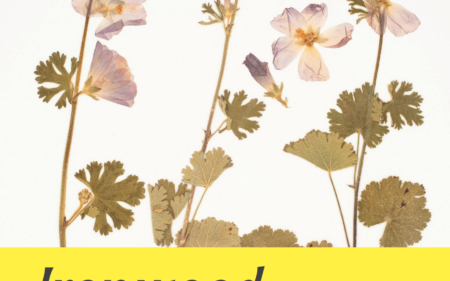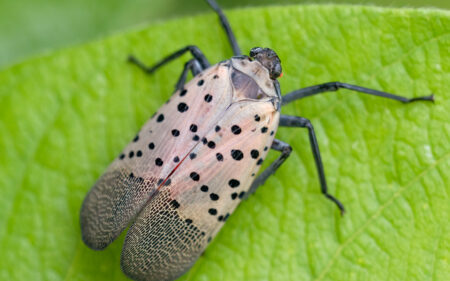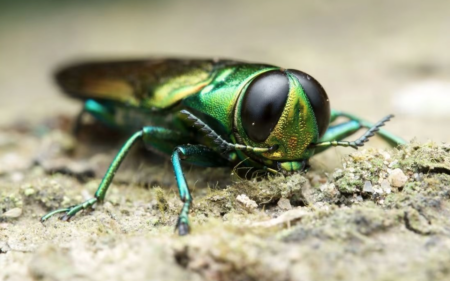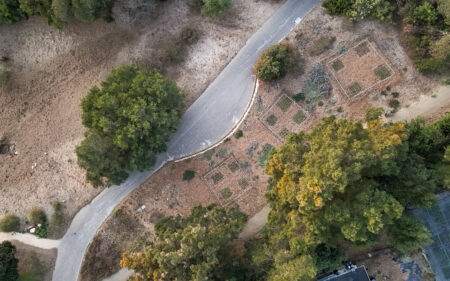For the Love of the Garden’s Meadow
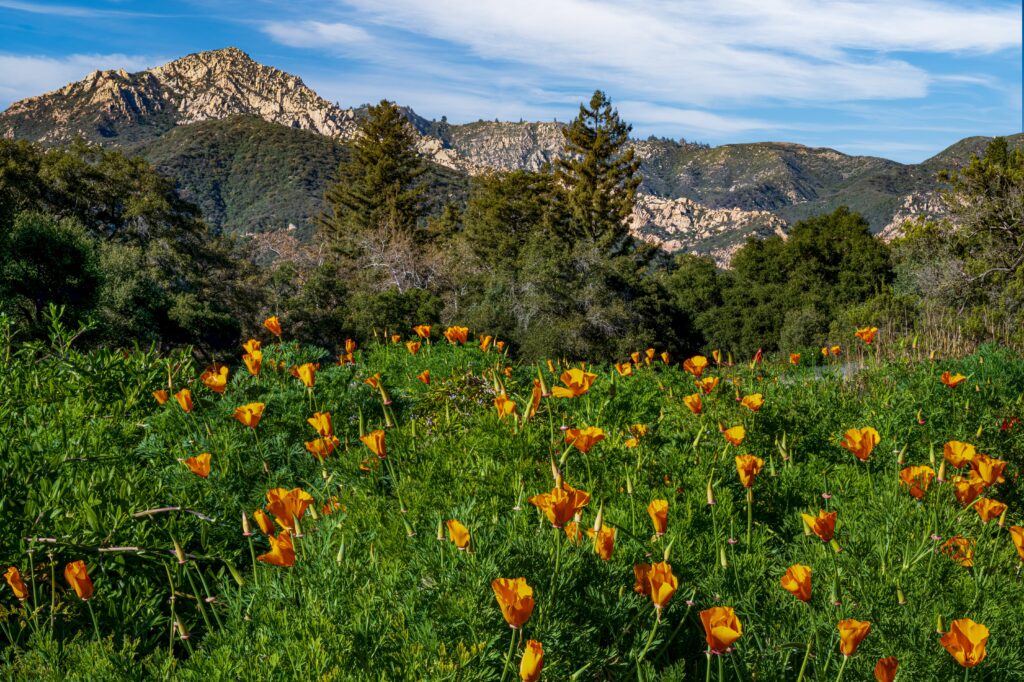
The Meadow is one of the most iconic sections at Santa Barbara Botanic Garden. In spring, it provides the opportunity to view our own local “superbloom” of bright orange California poppies (Eschscholzia californica), the purples of blue-eyed Grass (Sisyrinchium bellum), and a changing palette of annual wildflowers. In the summer, blue gramma grass (Bouteloua gracilis) turns a golden brown and sends up its characteristic “eyebrow” seed heads that glow in the evening light. The meadow is home to several generations of California quail who use its grasses for food and shelter, California tree frogs who seek the moist protected environments of irrigation boxes, plus a red- shouldered hawk, and several king snakes who help manage our rodent population.
The Garden’s Meadow from 1925 to Today
Since almost the inception of the Garden in 1925, this area has been called the Meadow, though it has been home to a number of different displays over the years. In the 1940s/50s, the entire meadow was covered in native strawberries (Fragaria sp.), while in the early 2000s, this same area was heavily planted in large perennials such as sages (Salvia sp.). This era also featured “Toad Hall” – a structure made of woven willow and natural materials that guests could wander in and out of. In its current state, the Meadow section is a display of native California grassland plant species with mixed seasonal wildflowers. Species include grasses: gramma grass (Bouteluoa gracilis) and purple needlegrass (Stipa pulchra); herbaceous perennials California goldenrod (Solidago velutina spp. californica) and California fuchsia (Epilobium canum); and annual wildflowers prairie flax (Linum lewisii), punch bowl godetia (Clarkia bottae), blue field gilia (Gilia capitata), among others year to year. The borders of the meadow highlight a large selection of perennial plants and shrubs, chosen to display the beauty and diversity of the California Floristic Province. We are also working to include many cultivars derived from the Garden’s Plant Introduction Program in the meadow borders to showcase these historic and special plants – a few of which are popular and readily available in the retail nursery trade today.
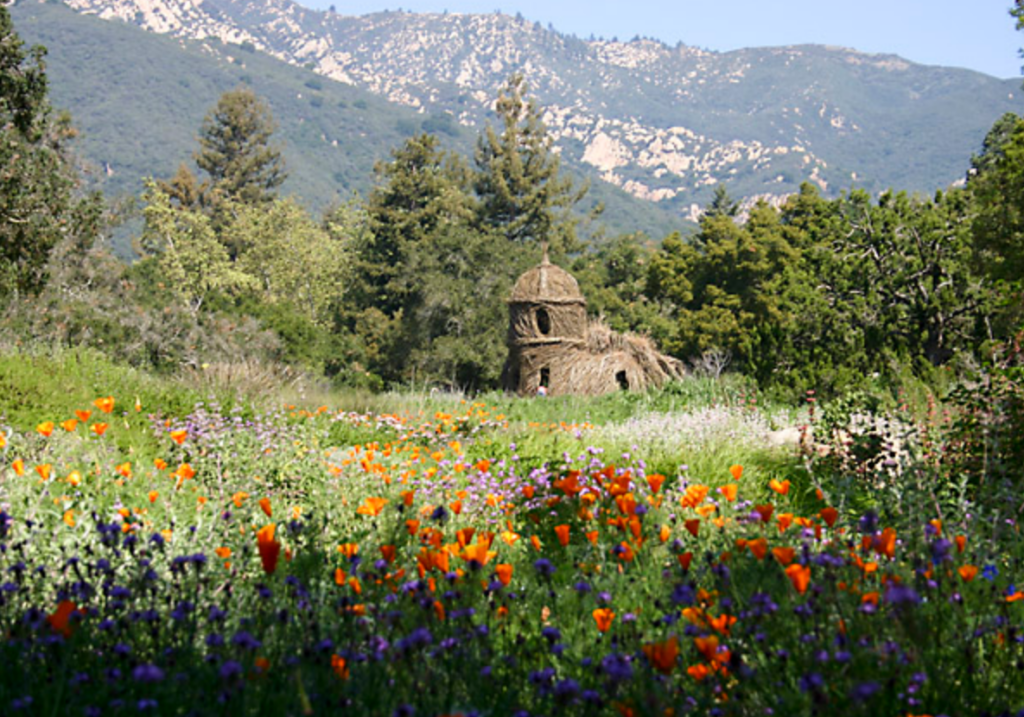
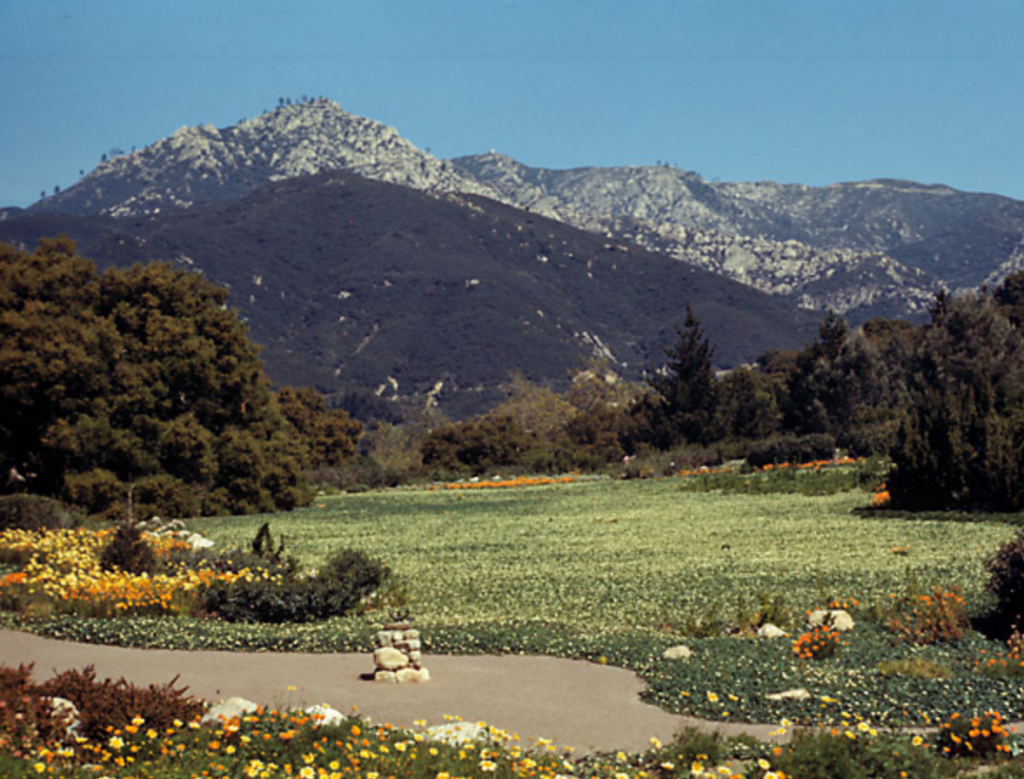
Managing the Meadow Takes Dedication – and Volunteers!
Gardens are naturally in a constant state of change – a truism that brings gardeners delight in witnessing all the dynamics of each season, and frustration when those changes are not what we expect or want. Today, we want the Meadow to look natural and untouched, with spontaneous pockets of poppies and goldenrod planted to add bursts of color in different seasons. However, any garden design, whether naturalistic or formal, requires diligent maintenance. Our challenges in the Meadow are common ones in this corner of California. Gophers and deer love to eat poppies as much as guests enjoy seeing them each year. Irrigation systems must be continually repaired and adjusted to ensure proper irrigation to germinate annual wildflower seeds, while not overwatering and killing mature grasses. And then, the weeds. Multitudes of species pop up in any and every open patch of soil in a race to compete for sunlight and nutrients with the native wildflower seeds we sow every year. Thankfully, our dedicated crew of Wednesday Grounds Volunteers help ensure native plants outcompete the nonnatives every year. Each week, they dedicate their time alongside Meadow Gardener Kristine Cincotta hand pulling and digging out these undesirable plants.
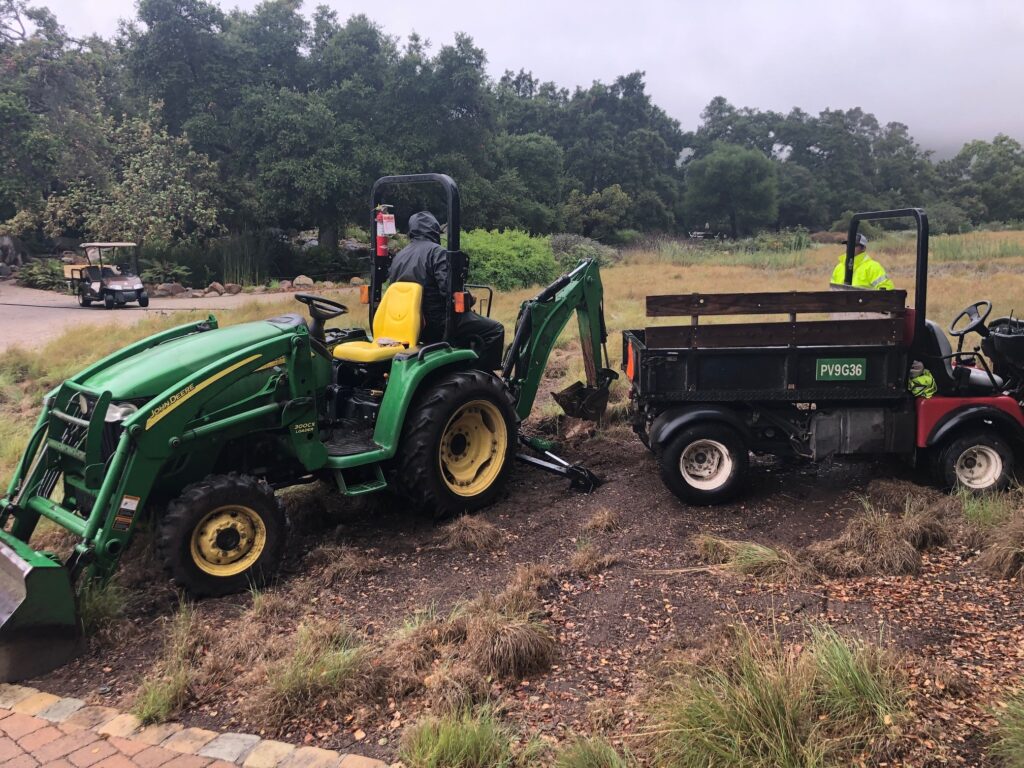
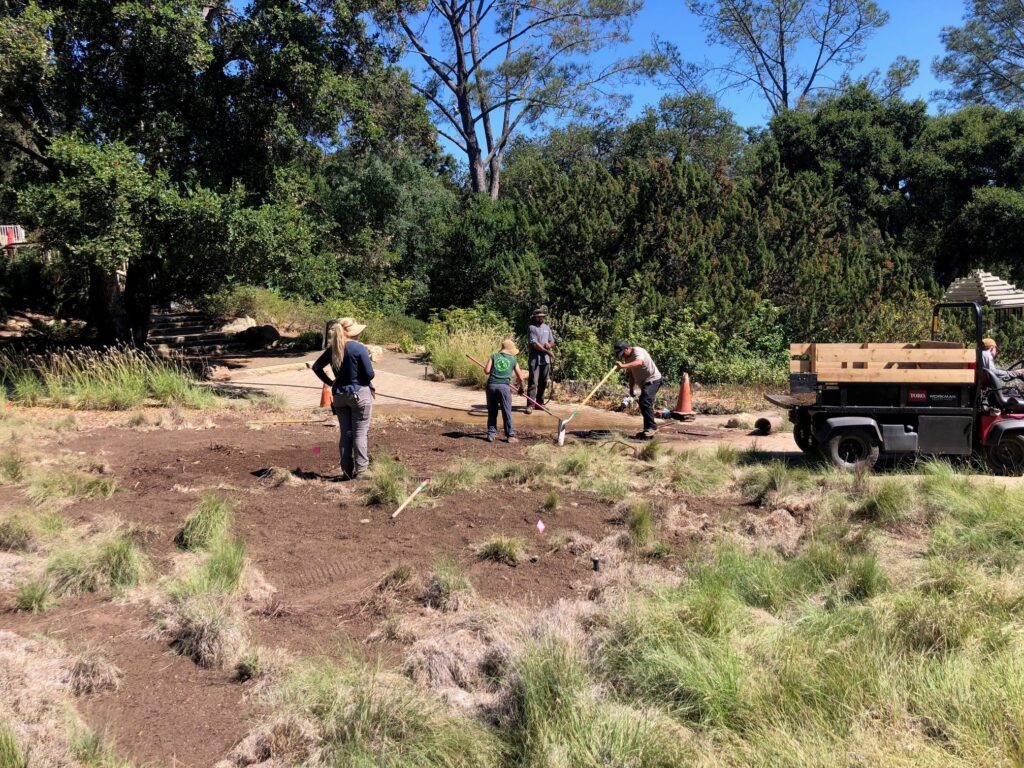
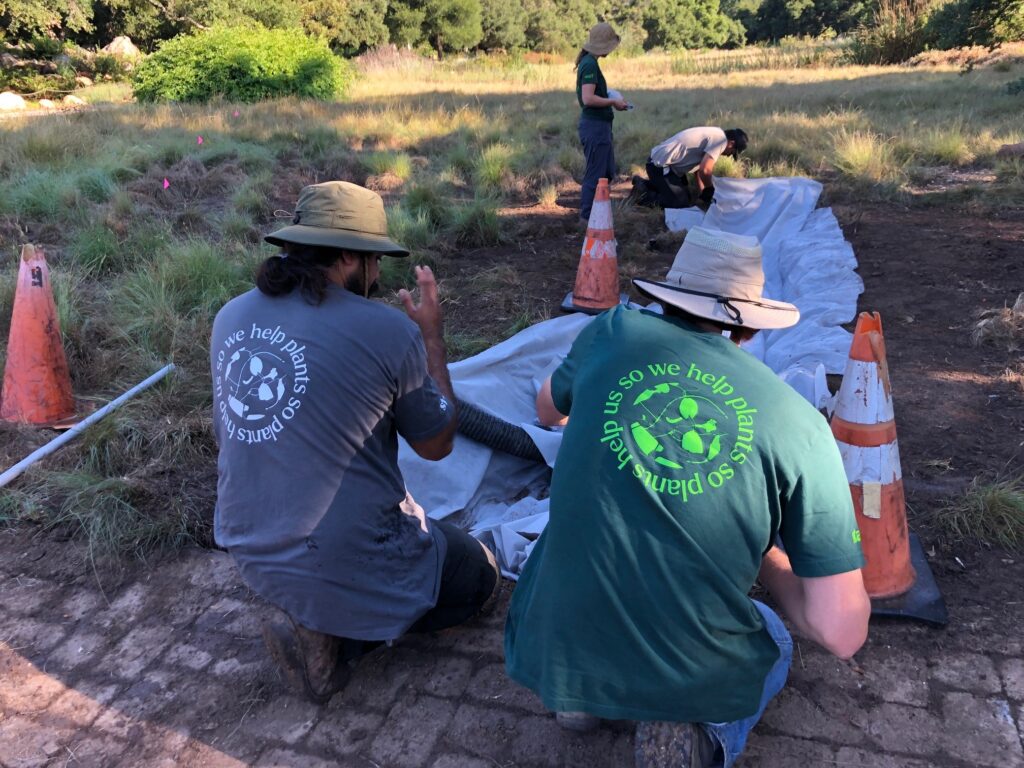
Battling Invasive Species
In addition to routine maintenance and management of the Meadow, this year we have undertaken the project of eradicating a very persistent, invasive weed that has been in the lower meadow for decades – false garlic (Nothoscordum gracile). According to Cal-IPC (California Invasive Plant Council), “False garlic is a perennial herb (family Liliaceae) with white flowers and long narrow grasslike leaves. It is native to South America. False garlic grows in grasslands and spreads via seed and underground bulbets. Seeds are dispersed via wind, water, and dumped grass waste. It is highliy invasive and difficult to control.”
As with many weeds that are difficult to control or eradicate, multiple techniques are often needed over several seasons to target the different growth cycles of the weed. In the case of the false garlic, a variety of techniques have been employed over multiple years with varying degrees of success.
- We have tried pulling out the vegetative growth to weaken the bulb over time and prevent any flowers from forming new seed (thank you Wednesday Crew volunteers).
- We have tried digging as much of the plant and bulb out by hand. Unfortunately, this only works if all the soil around the bulb of the plant is also removed. If not, the central bulb will create small bulblets that are easily spread by digging.
- Lastly, we have tried sheet mulching. This process involves covering the affected area with cardboard and then two to four inches of mulch. This method was effective for a couple years, but also meant we could not plant or seed other desirable species into this space.
Thanks to our varied, persistent efforts, false garlic is, at the moment, under better control. Our next step is reseeding and replanting the lower Meadow area for a renewed display we hope to shine this spring.

Repairing Old Drainage
Additionally, our Garden Team repaired a perennial drainage issue in the southern portion of the Meadow. Using our tractor’s backhoe attachment, we successfully located a large-diameter terracotta drainage pipe, likely installed many decades ago to help drain excess rainwater out of the meadow. During the excavation process, we discovered a large portion of this old pipe had collapsed, causing rainwater to well up to the surface and run over the adjacent path below. To fix this, we removed a section of the old broken pipe and installed a new perforated PVC pipe into it, surrounded by gravel and weed cloth to prevent soil clogging which would inhibit its drainage ability. This pipe has been buried 24 inches below the surface and will help us to better drain excess runoff out of the meadow. The water will now make its way deeper into the soil through gravity and eventually into the Arroyo Section of the Garden where it can nourish our treasured riparian species.
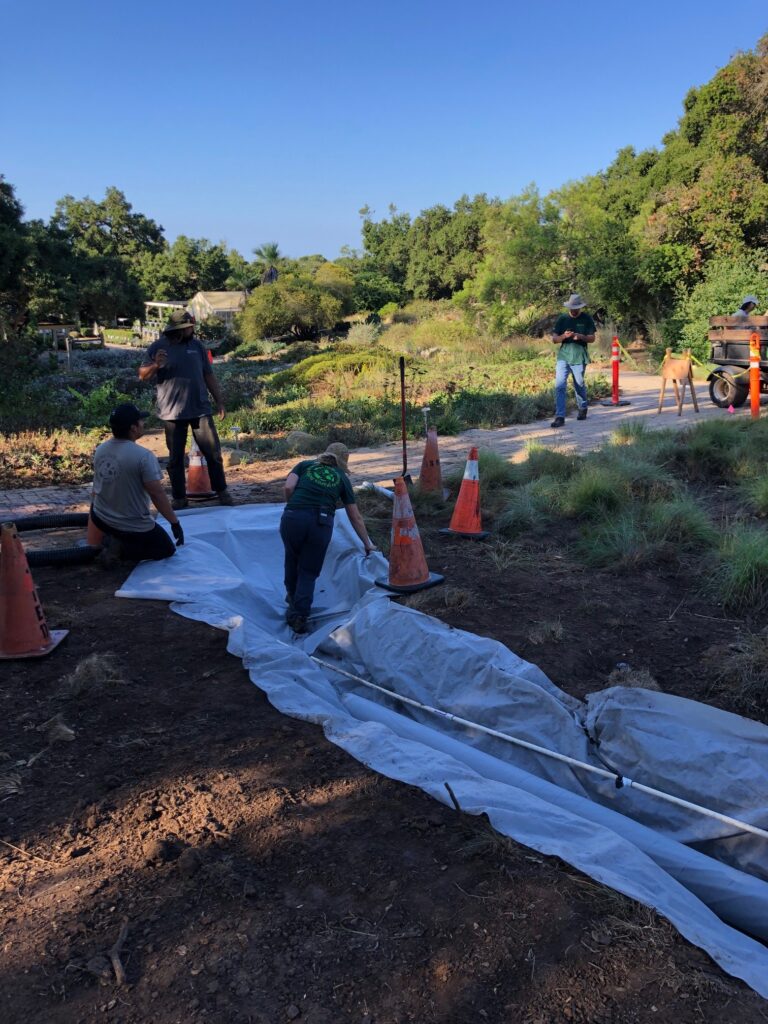
The Future of the Meadow
The lower portion of the Meadow is now covered with a generous layer of compost that our team makes onsite from green waste deposited in our maintenance yard by our Gardeners. The lower Meadow now awaits the upcoming rains in anticipation of fall planting season! In addition to mixed wildflower seed, we plan to add more herbaceous perennials to this portion of the meadow. We will specifically be working with yarrow (Achillea millefolium) grown from seed collected from existing plants in our collection. This will create another wildflower mosaic that we hope will bring spring beauty to guests and new sources of food for our pollinators.
Every year and every season bring something new to the Meadow. As it evolves, this section continues to be a rewarding experiment in native ornamental horticulture, a healthy habitat for wildlife, and a wonderful display of the diversity of our California flora.
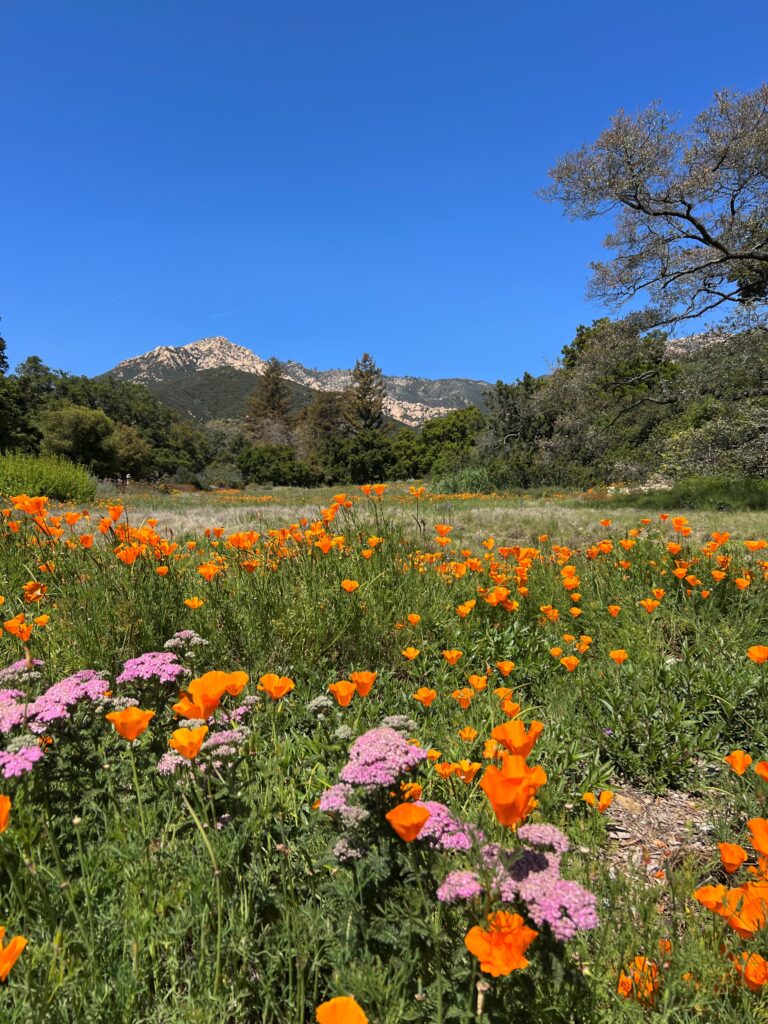
 Donate
Donate